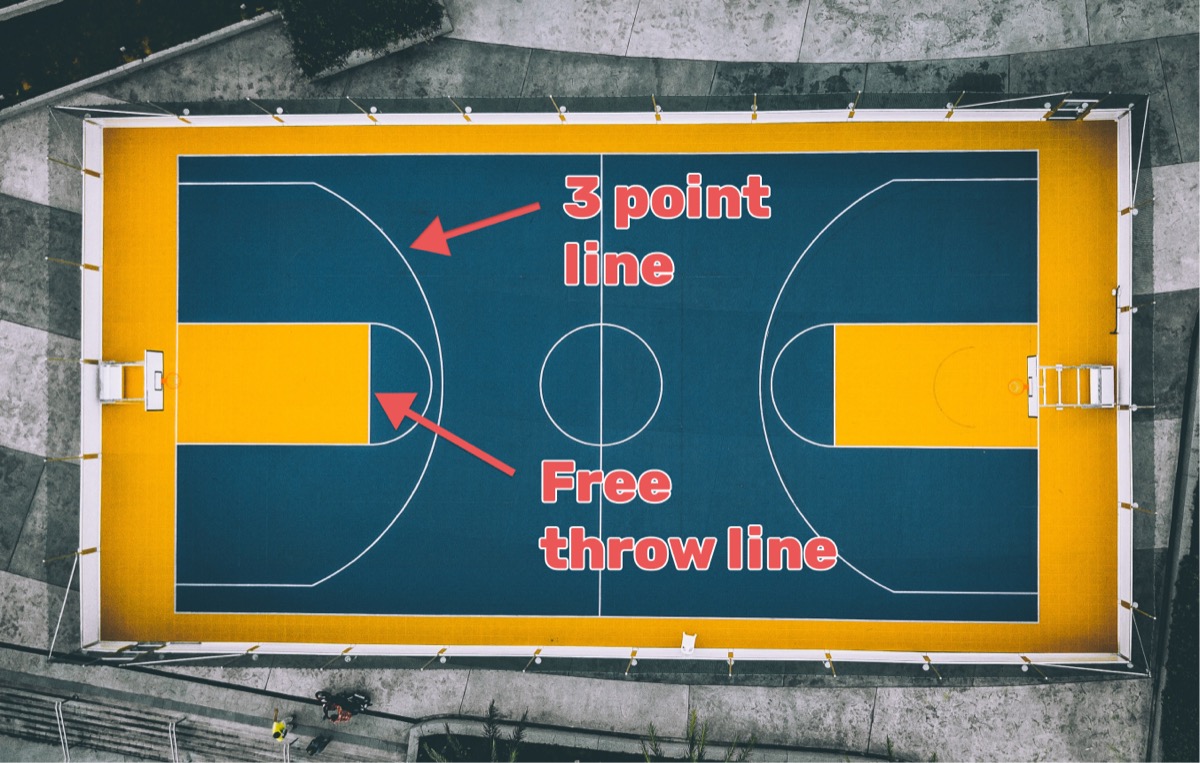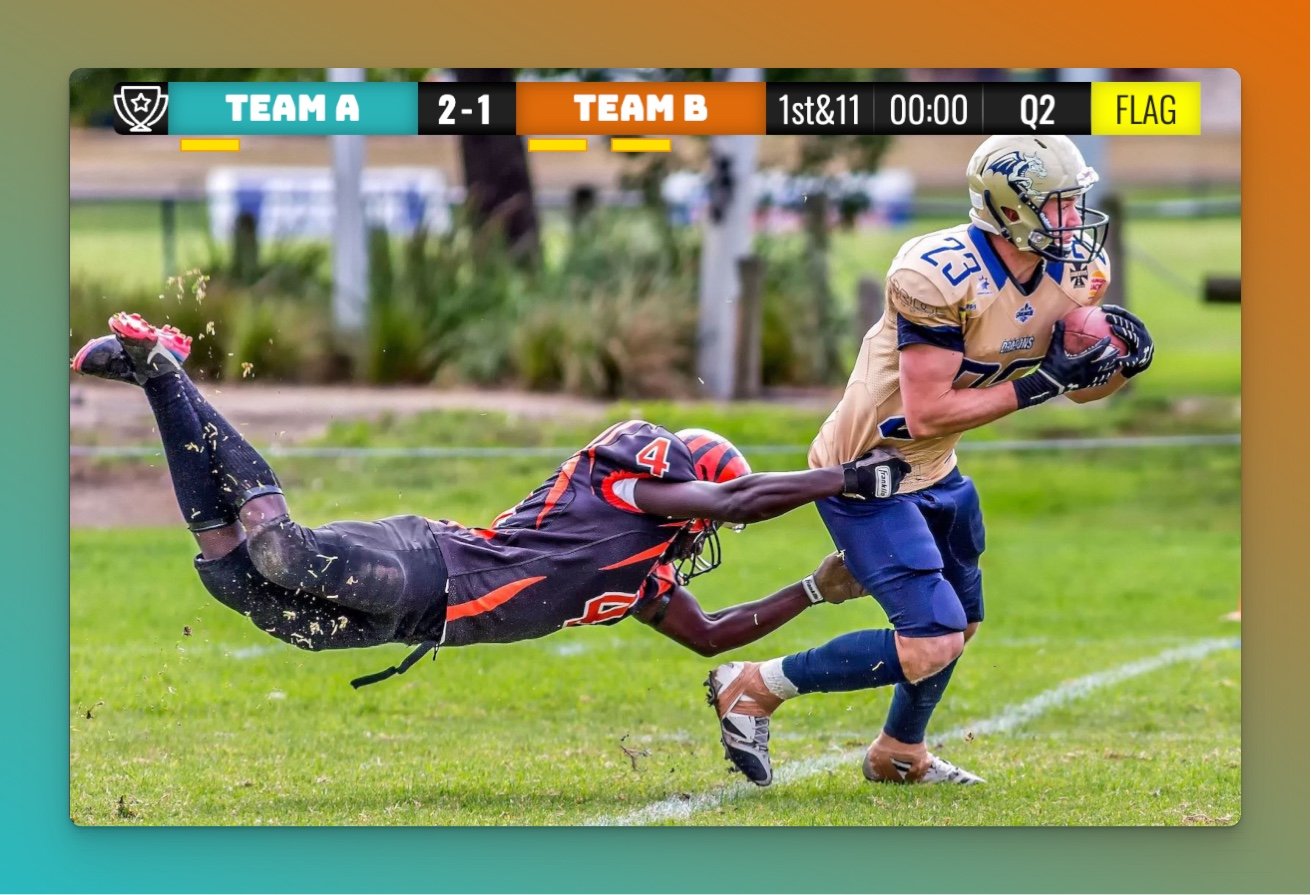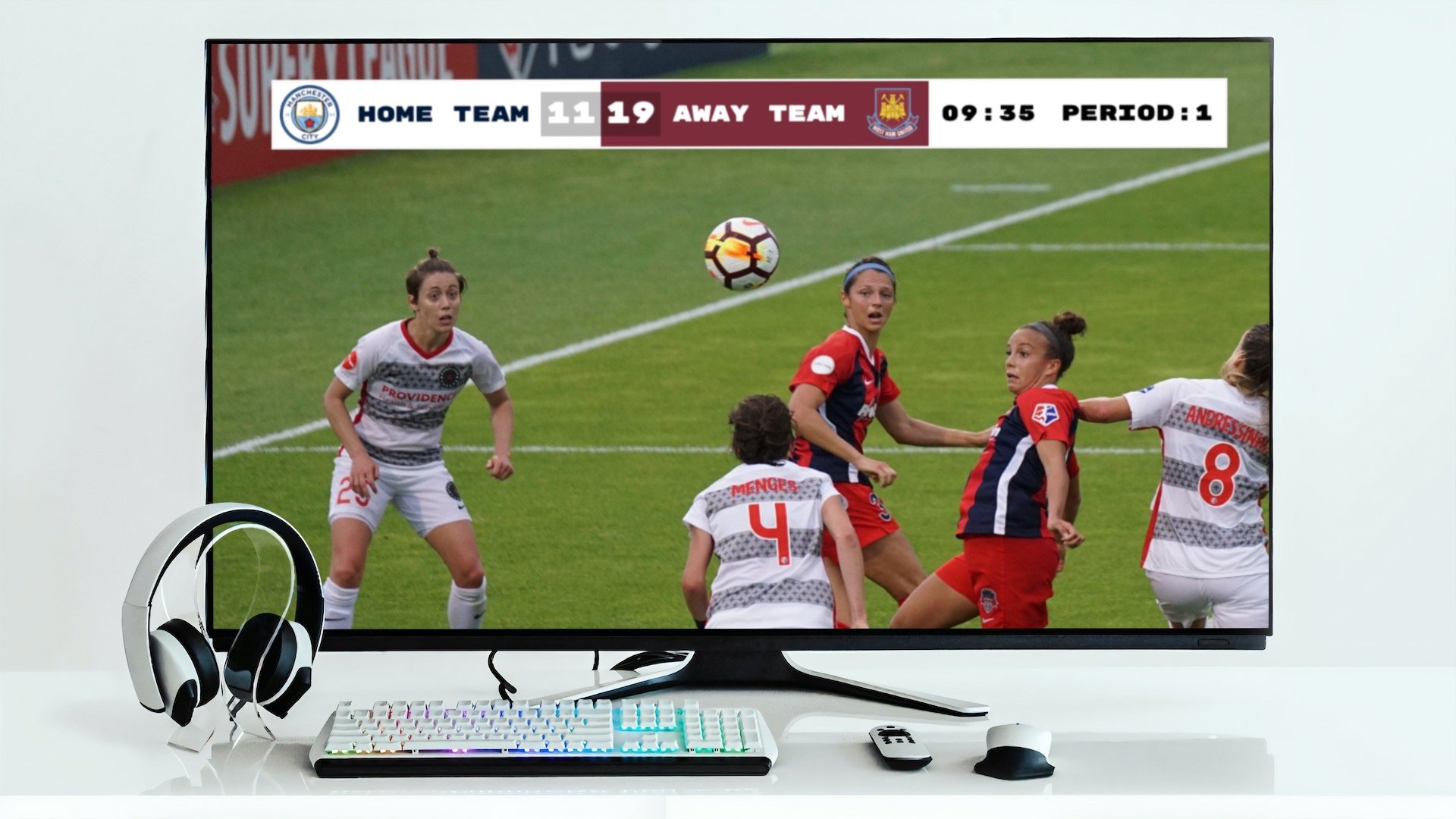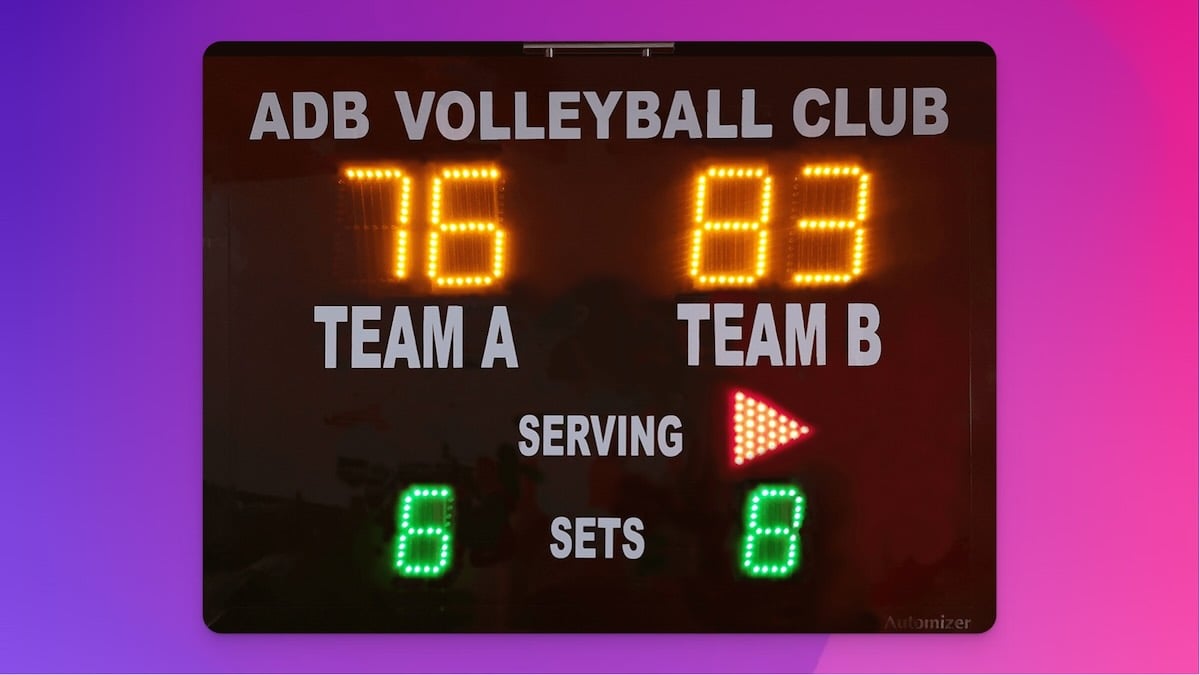Definition of Score Bug
A score bug is a persistent graphic overlay displayed on television broadcasts that shows real-time game information without obscuring the main video content. Also referred to as score tickers or score graphics, these elements typically occupy corner positions on screens and update automatically as game conditions change.
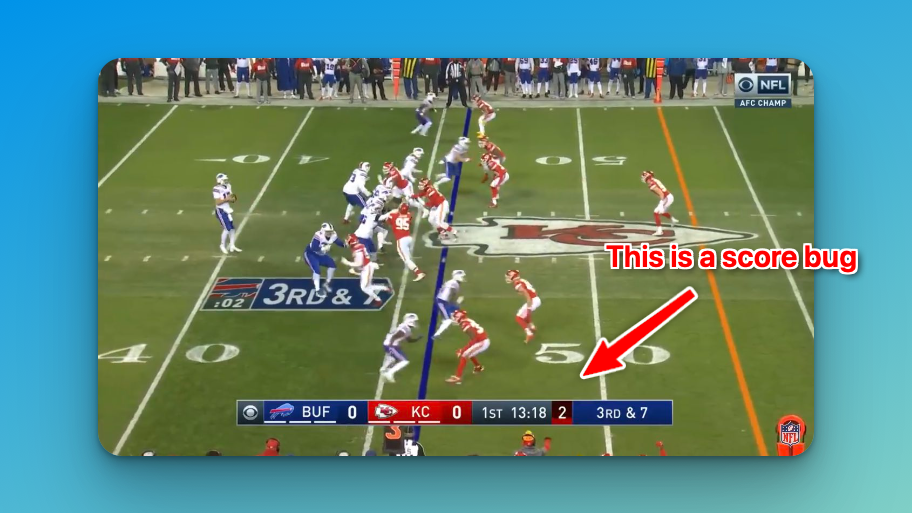
Essential Components of Score Bugs
Score bugs contain sport-specific information tailored to viewer needs:
Universal Elements
- Team names or abbreviations
- Current score for each team
- Game clock or time remaining
- Period, quarter, or inning indicator
Sport-Specific Elements
- Football: Down and distance, possession indicator, timeouts remaining
- Basketball: Shot clock, team fouls, bonus indicators
- Tennis: Set scores, games won, serve indicator
- Baseball: Inning, outs, runners on base, pitch count
- Volleyball: Set scores, rotation order, challenge availability
Etymology of "Score Bug"
The term "score bug" has uncertain origins within broadcast terminology. Two primary theories explain the nomenclature:
Corner Placement Theory
The word "bug" may derive from the graphic's typical corner placement, analogous to insects appearing in window corners. This positioning minimizes viewer obstruction while maintaining constant visibility.
Industry Colloquialism Theory
Broadcasting professionals may have adopted "bug" as informal terminology for any small, persistent graphic element. Similar usage appears in "network bug" (channel identification logos) and "station bug" (local affiliate identifiers).
Historical Development of Score Bugs
First Implementation (1992)
David Hill, head of Sky Sports, introduced the first score bug during an English Premier League broadcast in 1992. Hill's frustration with missing scores when joining matches mid-game motivated this innovation. Despite strong opposition from his supervisor, who called it "the stupidest thing he had ever seen," Hill maintained the graphic on-air.
This resistance to innovation parallels many broadcasting advances. Within five years, score bugs became industry standard across global sports broadcasts.
Evolution and Adoption
Score bug technology evolved through several phases:
- Static Graphics (1992-1995): Simple text overlays updated manually
- Dynamic Updates (1995-2000): Automated score feeds from stadium systems
- Enhanced Graphics (2000-2010): Addition of team logos, animations, and statistics
- Interactive Elements (2010-present): QR codes, social media integration, betting odds
Benefits for Modern Viewers
Score bugs serve critical viewing functions:
Instant Context
Viewers joining broadcasts mid-game immediately understand game state without waiting for verbal updates. This accessibility increases audience retention and satisfaction.
Continuous Information
During replays, commercials, or discussion segments, score bugs maintain game awareness. Viewers can multitask without losing track of critical information.
Enhanced Engagement
Statistical overlays deepen viewer understanding. Advanced metrics like possession percentages, shot attempts, and player statistics transform passive viewing into analytical experiences.
Applications Beyond Sports
Score bug technology extends to various broadcasting contexts:
- Financial Programming: Stock tickers, market indices, currency rates
- News Broadcasting: Election results, breaking news updates, weather alerts
- Esports Streaming: Player health, resources, objective timers
- Reality Television: Voting tallies, competition standings, elimination countdowns
Creating Custom Score Bugs for Broadcasts
Modern streaming technology enables broadcasters at any level to implement professional score bugs without expensive hardware or software investments.
Technical Requirements
- Streaming Software: OBS Studio, Streamlabs, XSplit, or similar
- Score Management System: Web-based platform for real-time updates
- Internet Connection: Stable connection for cloud synchronization
- Chroma Key Knowledge: Basic understanding of transparency layers
Implementation Process
Follow these steps to create a functional score bug:
- Click the button above to create a scoreboard
- Select your sport type for appropriate field configurations
- Customize appearance including colors, fonts, and layout
- Generate the browser source URL for streaming software
- Add as overlay in your broadcasting application
Mobile Control Advantages
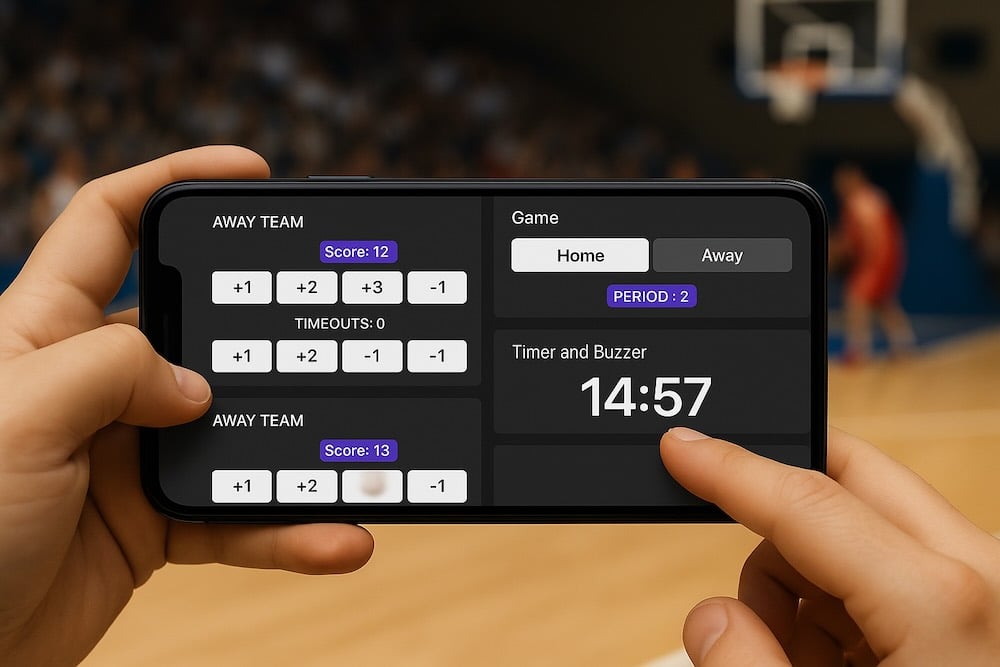
Remote scoreboard control via mobile devices provides operational flexibility:
- Courtside Updates: Scorekeepers can update from optimal viewing positions
- Multi-User Access: Multiple officials can manage different statistics
- Backup Redundancy: Alternative control methods prevent broadcast interruptions
- Real-Time Synchronization: Changes appear instantly across all platforms
Integration with Streaming Platforms
Detailed integration guides for popular platforms:
- General streaming software setup
- OBS Studio configuration
- Basketball-specific OBS overlay with shot clock and bonus tracking
- Streamlabs implementation
Cost Comparison
Traditional broadcast graphics systems cost $5,000-$50,000. Web-based solutions offer comparable functionality starting at $0 for basic features, making professional broadcasts accessible to:
- Youth sports leagues
- High school athletics
- Amateur tournaments
- Recreational leagues
- Streaming content creators
Score bugs transform amateur broadcasts into professional presentations, enhancing viewer experience while maintaining production efficiency.

